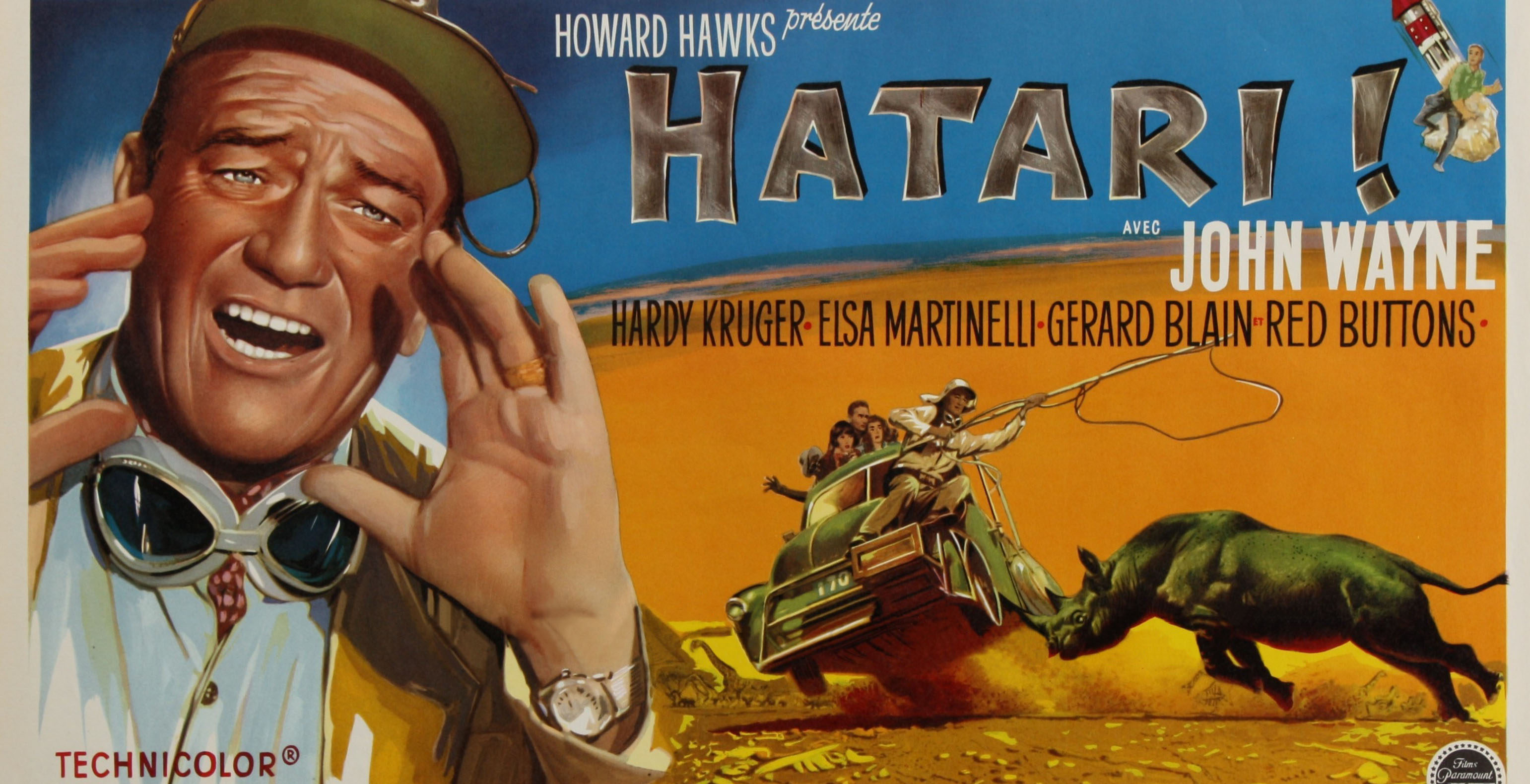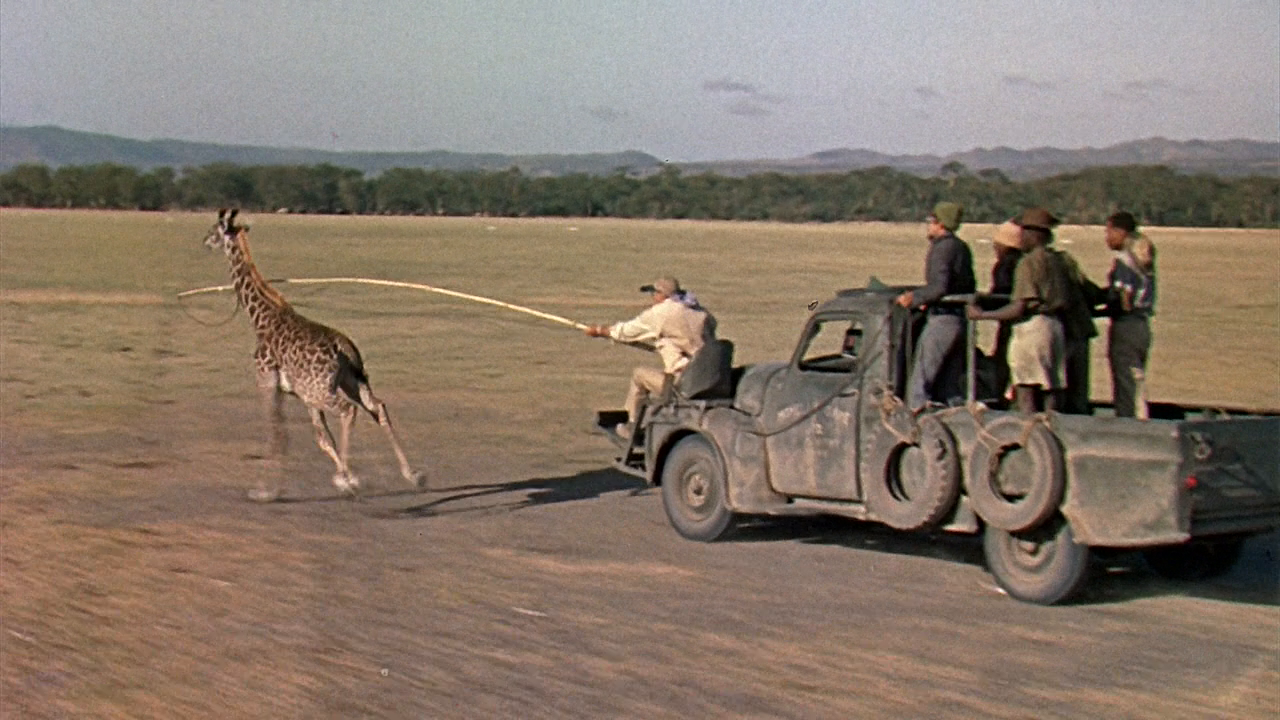
A wild, wildlife-catching spectacle from the legendary Howard Hawks that trades plot for action can still dazzle.
Critic Dave Kehr once noted a long-echoed division of directors, separating them by the jobs they held before moving behind the camera. Billy Wilder and Preston Sturges began as writers; their dialogue-driven films feature sharp, crisp exchanges from strong characters. Don Siegel and Hal Ashby were editors whose work is influenced by skillful cutting. Alfred Hitchcock and Vincente Minnelli got their start as art directors, and their films emphasize the expressive use of decor.
It should come as no surprise, then, that Howard Hawks – a former writer turned director – helmed His Girl Friday, a film whose dialogue was delivered at a blistering 240 words per minute (most movies average around 90). Hawks went on to make more classic films in a wider variety of genres than just about any other director. His freewheeling approach enabled him to turn mediocre scripts into gold, and he famously claimed that a good movie only needs “three good scenes and no bad scenes.” Even so, he had his work cut out for him with Hatari, the 1962 action-adventure romantic comedy featuring dramatic wildlife chases against the scenic backdrop of Mount Meru. “There wasn’t much story,” he once admitted. “I accept anything anybody says about it.”
In place of a complex narrative, Hawks opted for thrilling, never-before-seen on-screen sequences of animal-catching in Africa. From the start, he knew he wanted to focus on a crew that captures animals for zoos, originally planning to cast both Clark Gable and John Wayne before Gable’s death.
Shot on location in Tanganyika (now Tanzania), Wayne and his co-stars race across the plains after rhinos, zebras, elephants and giraffes by truck. Depending on an animal’s size, one rider can snag it by the head with a rope noose while another vehicle herds the beast back toward the catching truck. Remarkably, no guns were used, and each captured animal was treated as a precious asset. Hatari! (“Danger!” in Swahili) was a much-needed hit for Wayne and was the 8th highest-grossing film in 1962. Though it’s also rememembered for Henry Mancini’s score and the introduction of the memorable tune “Baby Elephant Walk,” Hatari! still remains as one of the most realistically shot Hollywood productions set in Africa.

The opening rhinoceros chase depicts a method now banned: with reliable tranquilizers and dart guns, there’s no longer a need for a cowboy-style lasso. The adrenaline in the actors’ performances is palpable in each chase sequence. Wayne admitted he was scared, recalling how each swerve felt like it might overturn the truck, with nothing but a seat belt for support while the roar of engines and trampling hooves filled his ears. Much of the audio was later re-dubbed due to Wayne’s colorful language during these harrowing scenes. Much of the action scene audio was re-dubbed due to John Wayne’s cursing while wrestling with the animals.
Leading the crew, Sean Mercer (Wayne) is joined by “Pockets” (Red Buttons) and Kurt Mueller (Hardy Kruger). Their all-male world is disrupted by the arrival of a beautiful photographer, Anna Maria D’Allesandro (Elsa Martinelli), who is there to capture safari pictures. Between chase sequences, there’s minimal plot back at the ranch, aside from a budding romance between Mercer and “Dallas” D’Allesandro.
Even with Hawks’ mastery of comedy and action, two hours and forty minutes of big-game hunting may feel like too much of a good thing. Yet it’s the raw, visually striking sequences – heavily promoted upon release – that have stuck in audiences’ memories. If nothing else, Hatari! proves that, with no real plot at all, “three good scenes and no bad ones” can still make all the difference.
HATARI
Director Howard Hawks
Stars John Wayne, Elsa Martinelli, Hardy Krüger, Red Buttons
Running Time 2h 37m
—
McCarthy, Todd. Howard Hawks: the grey fox of Hollywood, New York, Grove Press, 1997, pg 572, ISBN 0802115985

